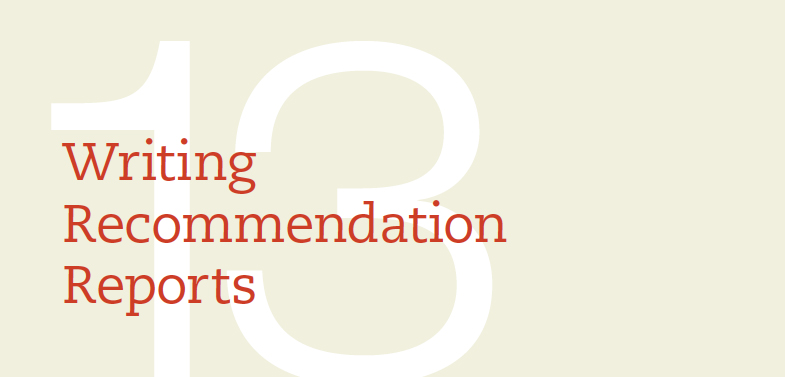Chapter Introduction

CHAPTER 12 DISCUSSED informational reports: those in which the writer’s main purpose is to present information. This chapter discusses recommendation reports. A recommendation report also presents information but goes one step further by offering suggestions about what the readers ought to do next.
Here are examples of the kinds of questions a recommendation report might address:
What should we do about Problem X? What should we do about the increased cost of copper, which we use in manufacturing our line of electronic components?
Should we do Function X? Although we cannot afford to pay tuition for all college courses our employees wish to take, can we reimburse them for classes directly related to their work?
Should we use Technology A or Technology B to do Function X? Should we continue to supply our employees with laptops, or should we switch to tablets?
We currently use Method A to do Function X. Should we be using Method B? We sort our bar-coded mail by hand; should we buy an automatic sorter?
Each of these questions can lead to a wide variety of recommendations, ranging from “do nothing” to “study this some more” to “take the following actions immediately.”
